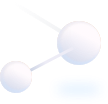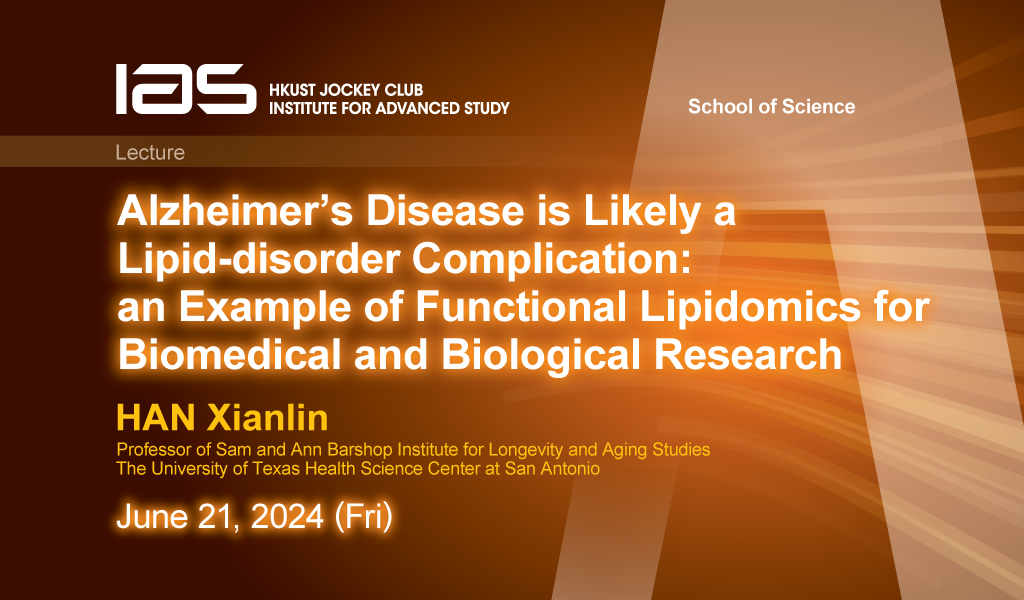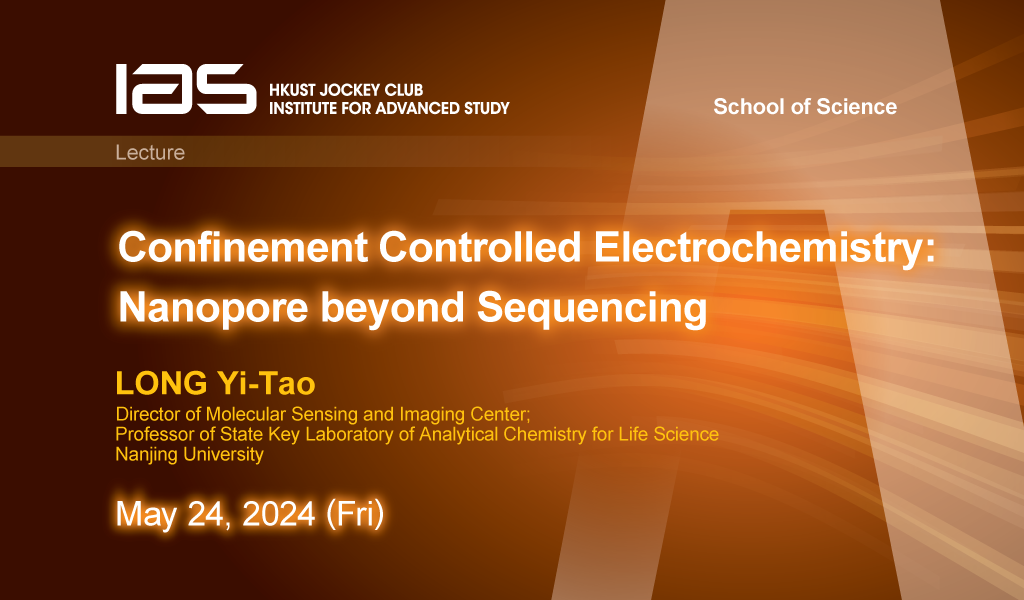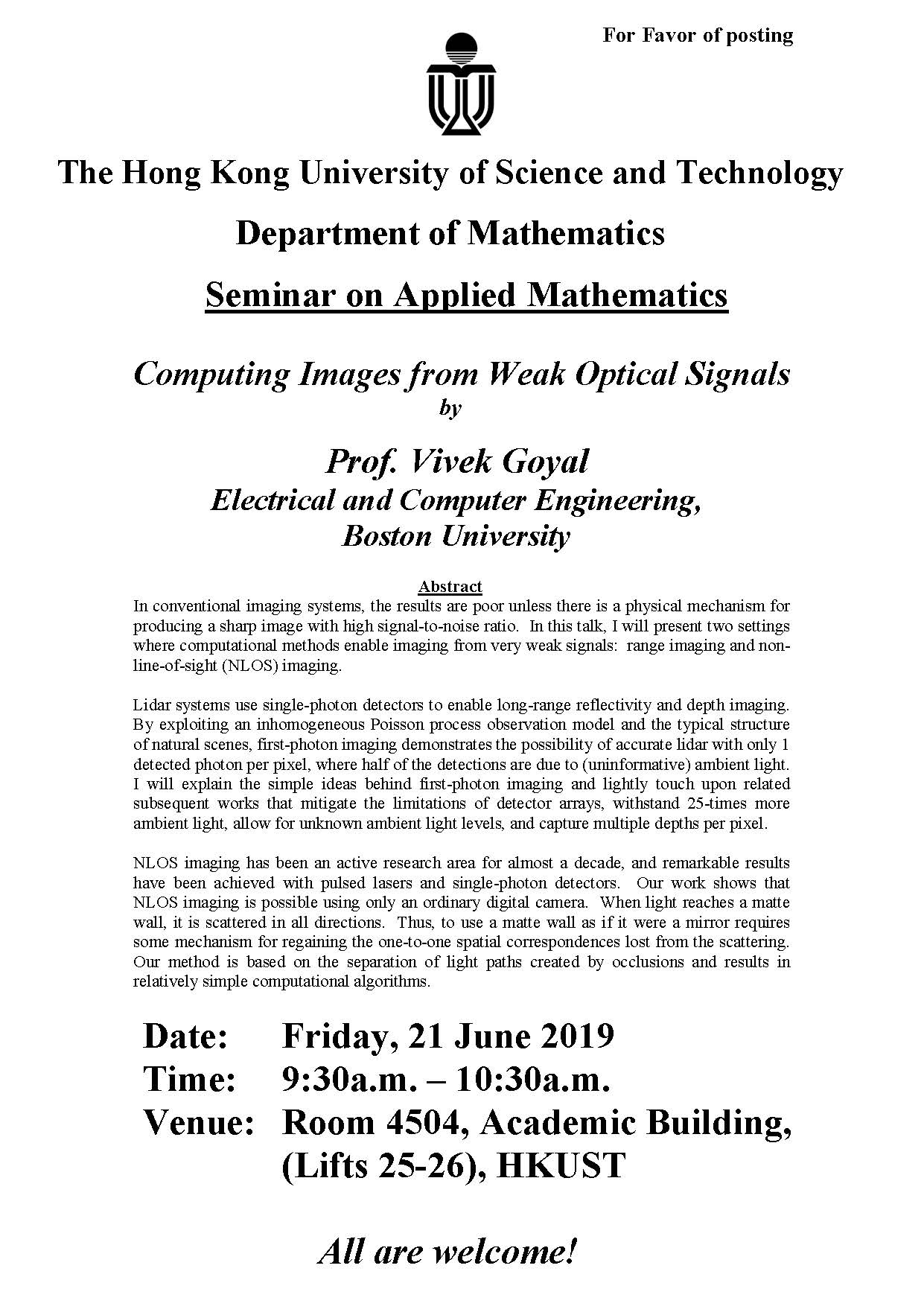Abstract
In conventional imaging systems, the results are poor unless there is a physical mechanism for producing a sharp image with high signal-to-noise ratio. In this talk, I will present two settings where computational methods enable imaging from very weak signals: range imaging and non-line-of-sight (NLOS) imaging.
Lidar systems use single-photon detectors to enable long-range reflectivity and depth imaging. By exploiting an inhomogeneous Poisson process observation model and the typical structure of natural scenes, first-photon imaging demonstrates the possibility of accurate lidar with only 1 detected photon per pixel, where half of the detections are due to (uninformative) ambient light. I will explain the simple ideas behind first-photon imaging and lightly touch upon related subsequent works that mitigate the limitations of detector arrays, withstand 25-times more ambient light, allow for unknown ambient light levels, and capture multiple depths per pixel.
NLOS imaging has been an active research area for almost a decade, and remarkable results have been achieved with pulsed lasers and single-photon detectors. Our work shows that NLOS imaging is possible using only an ordinary digital camera. When light reaches a matte wall, it is scattered in all directions. Thus, to use a matte wall as if it were a mirror requires some mechanism for regaining the one-to-one spatial correspondences lost from the scattering. Our method is based on the separation of light paths created by occlusions and results in relatively simple computational algorithms.
21 Jun 2019
9:25am - 10:25am

Where
Room 4504, Academic Building, (Lifts 25-26), HKUST
Speakers/Performers
Prof. Vivek Goyal
Electrical and Computer Engineering, Boston University
Electrical and Computer Engineering, Boston University
Organizer(S)
Department of Mathematics
Contact/Enquiries
mathseminar@ust.hk
Payment Details
Audience
Alumni, Faculty and Staff, PG Students, UG Students
Language(s)
English
Other Events

21 Jun 2024
Seminar, Lecture, Talk
IAS / School of Science Joint Lecture - Alzheimer’s Disease is Likely a Lipid-disorder Complication: an Example of Functional Lipidomics for Biomedical and Biological Research
Abstract
Functional lipidomics is a frontier in lipidomics research, which identifies changes of cellular lipidomes in disease by lipidomics, uncovers the molecular mechanism(s) leading to the chan...

24 May 2024
Seminar, Lecture, Talk
IAS / School of Science Joint Lecture - Confinement Controlled Electrochemistry: Nanopore beyond Sequencing
Abstract
Nanopore electrochemistry refers to the promising measurement science based on elaborate pore structures, which offers a well-defined geometric confined space to adopt and characterize sin...

